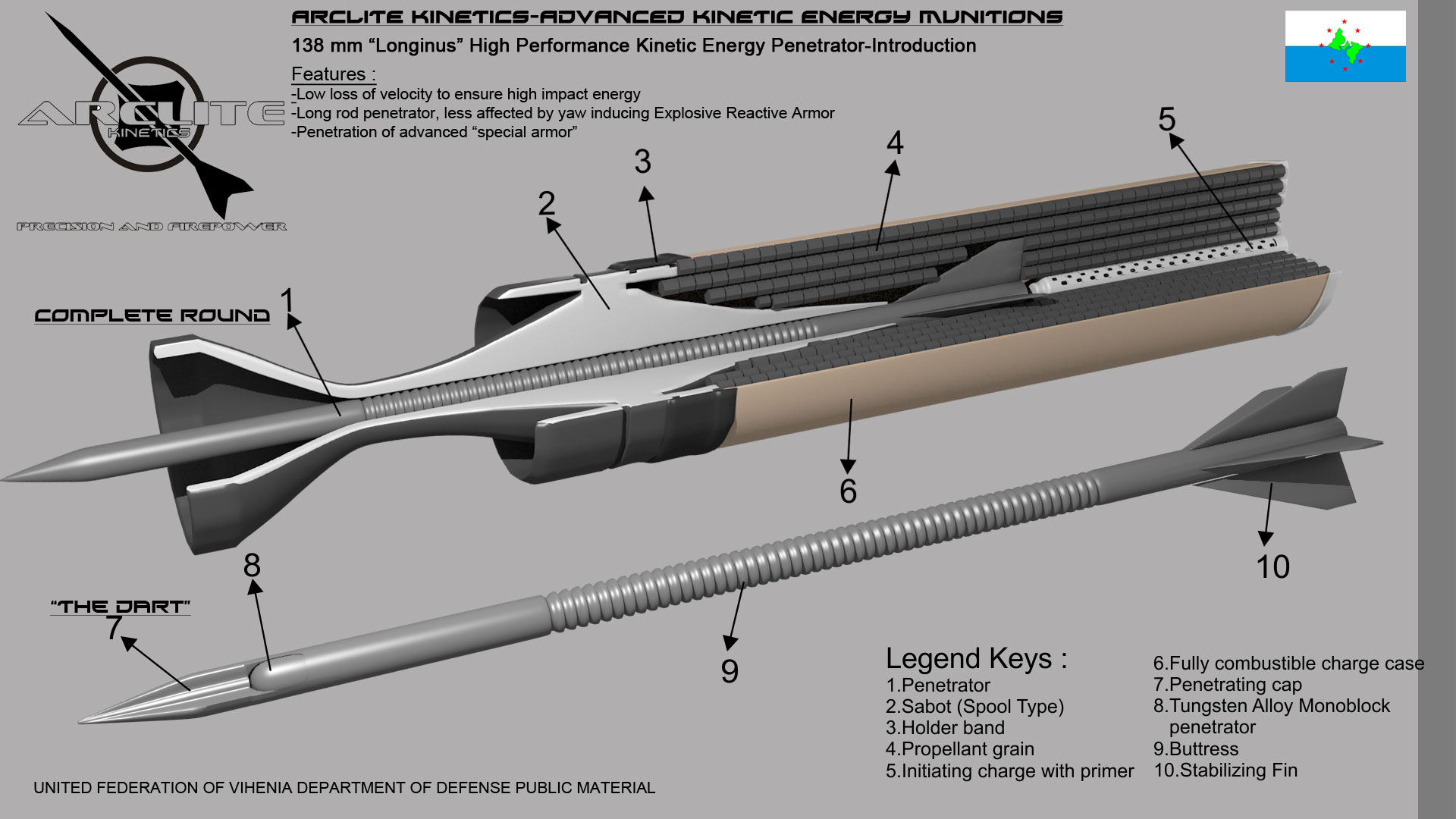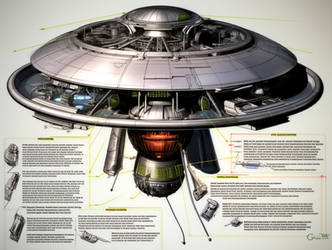ShopDreamUp AI ArtDreamUp
Deviation Actions
Description
Err supposedly this image is not simply depiction of APFSDS (Armor Piercing Fin Stabilized Discarding Sabot) promotion and introduction but rather a part of my "infographics" Project of "APFSDS-101 What, Why and How" Containing some explanation and bit history of APFSDS. Nonetheless i foresee that i would encounter difficult problem in explaining mechanism of penetration or perforation of the round.
Why such problem ? Because there are still debates regarding how actually APFSDS round work, how it can penetrate and later perforate (if one prefer to differentiate between perforation and penetration ) its target. For steel target (RHA) It might be quite well established that the round may "shorten" Itself due to immense amount of stress during penetration process and later once it reach end of the armor plate the round will break into spall (Both large and small) For rounds made out of DU (Depeleted Uranium) Another process may occur where the fragments of the round can burn (Pyrophoric effect)
Modern armor however are NOT only composed of homogenous steel but rather layered with different materials. For example the British made "Cobham" Which currently become mainstay of NATO armor technology consist of steel outer plate backed with some layers of other material (Classified unfortunately) Those materials have different density and physical properties Thus will behave differently when hit by APFSDS.
Modeling penetration/perforation on such armor material are not simple, one must actually do "trial and error" by live fire testing Or FEM (Finite Element Modelling) Computation to get his/her result which unfortunately beyond my ability. Current "measure of effectiveness" By "RHAe" or RHA Equivalent value or "Thickness effectiveness" Value (Anyone playing WOT and visit its forum or visit tank.net forum must have already know the famous "Armor Basics" pdf by Paul Lakowski) Are "under attack" and in my view at least..it won't stand the scrutiny.
There are however some papers one can find and download at DTIC website containing penetration test result on ceramic armor material but it's only deal with single homogenous material instead of combination of different materials modern armor has. Debates so far are not helpful for me because the arguments are seriously flawed by the fact that anyone claiming RHA Equivalent method are unable to provide comparable model of penetration. Basically they knew it wrong but don't know how to fix it.
Thereby my decisions however is to hold any claims, statements and calculations regarding to the APFSDS mechanisms of penetration/perforation until i managed to find a way to model it. Thus i won't claim any penetration/perforation depth figure for the APFSDS and perhaps relies more on "artistic license".. This is deviant art after all not hyper physics forum.
________________________________
The Longinus is the improved version of our previous "Lohengrin" APFSDS round, it boasts more accuracy due to provision of better sabot with two area of contacts which will reduce in barrel yaw. Sabot material is also improved by introduction of composite material to reduce parasitic weight thus allow higher muzzle velocity compared to conventional steel-aluminum sabot.
The kill vehicle or "dart" is a monoblock tungsten heavy alloy with very high Length to Diameter ratio (L/D) of 30 to help the penetrator to resist yaw induced by either sloping or Explosive Reactive Armor.
The APFSDS round can be fired by our standard 138mm gun and accommodated in already exist autoloader design of our AFV's
Why such problem ? Because there are still debates regarding how actually APFSDS round work, how it can penetrate and later perforate (if one prefer to differentiate between perforation and penetration ) its target. For steel target (RHA) It might be quite well established that the round may "shorten" Itself due to immense amount of stress during penetration process and later once it reach end of the armor plate the round will break into spall (Both large and small) For rounds made out of DU (Depeleted Uranium) Another process may occur where the fragments of the round can burn (Pyrophoric effect)
Modern armor however are NOT only composed of homogenous steel but rather layered with different materials. For example the British made "Cobham" Which currently become mainstay of NATO armor technology consist of steel outer plate backed with some layers of other material (Classified unfortunately) Those materials have different density and physical properties Thus will behave differently when hit by APFSDS.
Modeling penetration/perforation on such armor material are not simple, one must actually do "trial and error" by live fire testing Or FEM (Finite Element Modelling) Computation to get his/her result which unfortunately beyond my ability. Current "measure of effectiveness" By "RHAe" or RHA Equivalent value or "Thickness effectiveness" Value (Anyone playing WOT and visit its forum or visit tank.net forum must have already know the famous "Armor Basics" pdf by Paul Lakowski) Are "under attack" and in my view at least..it won't stand the scrutiny.
There are however some papers one can find and download at DTIC website containing penetration test result on ceramic armor material but it's only deal with single homogenous material instead of combination of different materials modern armor has. Debates so far are not helpful for me because the arguments are seriously flawed by the fact that anyone claiming RHA Equivalent method are unable to provide comparable model of penetration. Basically they knew it wrong but don't know how to fix it.
Thereby my decisions however is to hold any claims, statements and calculations regarding to the APFSDS mechanisms of penetration/perforation until i managed to find a way to model it. Thus i won't claim any penetration/perforation depth figure for the APFSDS and perhaps relies more on "artistic license".. This is deviant art after all not hyper physics forum.
________________________________
The Longinus is the improved version of our previous "Lohengrin" APFSDS round, it boasts more accuracy due to provision of better sabot with two area of contacts which will reduce in barrel yaw. Sabot material is also improved by introduction of composite material to reduce parasitic weight thus allow higher muzzle velocity compared to conventional steel-aluminum sabot.
The kill vehicle or "dart" is a monoblock tungsten heavy alloy with very high Length to Diameter ratio (L/D) of 30 to help the penetrator to resist yaw induced by either sloping or Explosive Reactive Armor.
The APFSDS round can be fired by our standard 138mm gun and accommodated in already exist autoloader design of our AFV's
Image size
1920x1080px 215.88 KB
Comments20
Join the community to add your comment. Already a deviant? Log In
What is the length of this SABOT? 41 inches?

















![[Inkscape] Staris J7I 'Keshtan' SMG](https://images-wixmp-ed30a86b8c4ca887773594c2.wixmp.com/f/6c989e0c-9e64-4984-8fba-e3bebd0c87ab/dek4j58-9c958e7d-1568-4463-9cc1-16dd35411df9.png/v1/crop/w_184)
![[Inkscape] Kaneesian 8K2 'Ingunis' Rocket Launcher](https://images-wixmp-ed30a86b8c4ca887773594c2.wixmp.com/f/6c989e0c-9e64-4984-8fba-e3bebd0c87ab/df1ktbb-34c9c285-ace6-4b4d-b3e0-daebc640cdaf.png/v1/crop/w_184)
![[Inkscape] Kaneesian 6K4 'Raconis' Machine Gun](https://images-wixmp-ed30a86b8c4ca887773594c2.wixmp.com/f/6c989e0c-9e64-4984-8fba-e3bebd0c87ab/desyhz5-d8191d24-e1de-4ada-b7f1-2cfb559a6939.png/v1/crop/w_184)













![Z6 Riot Control Baton tech readout [New]](https://images-wixmp-ed30a86b8c4ca887773594c2.wixmp.com/f/e0dc8eb0-7eb3-4716-b7a1-4364a45acdc0/d9plhgh-0b0b6712-c798-4db7-a787-ddc7cd4fea5a.jpg/v1/crop/w_184)



